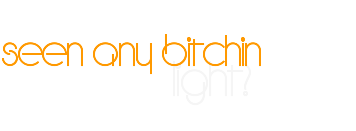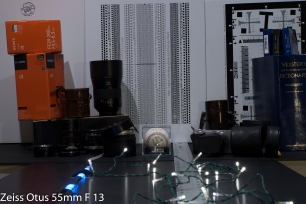50mm or thereabouts, is considered the “normal” lens length for a full frame camera. What’s a normal lens? Wikipedia states “a normal lens is a lens that reproduces a field of view that generally looks “natural” to a human observer under normal viewing conditions.” That’s good enough for this forum. According to many, including sites like DXOmark, the Zeiss Otus 55mm is the ultimate normal lens. Leica people will throw the Apo Summicron 50mm into that mix, which I’m sure it deserves. I will be using the Zeiss as the benchmark lens. It’s fast enough at 1.4 to compare well with these wonderful antique fast 50’s. If someone wants to lend me the Summicron, I’ll use that too! Part one will look at 11 of these marvels, saving part two for the three super fast, 0.95’s
For more than 200 photos & comparison shots, see the Bitchinlight Flickr Page.
The lenses
- Zeiss Otus 55mm 1.4 ZE
- Sony/Zeiss FE 55 1.8
- Canon 50mm 1.2 Rangefinder
- Canon 50mm 1.5 Rangefinder
- Canon FD 50mm 1.2 L
- Konica Hexanon 57mm 1.2
- Zunow 5cm 1.1 (leica screw mount)
- MD Rokkor 58mm 1.2 PG
- Nippon Kogaku S.C. 5cm 1.4 (s mount)
- Nippon Kogaku S Auto 55mm 1.2 (Nikon F)
- Pentax SMC 50mm 1.2
- Mitakon 50mm 0.95 Dark Knight
- Canon 50mm 0.95 Dream Lens
- Leica 50mm Noctilux 0.95
The difficulties I faced taking on this project were many.
- how to put all these lenses on a level playing ground
- keep investment in time reasonable
- use what I have available
- how to present the data
- keep it interesting
- not be too frickin long!
This is the criteria used for the basic testing.
- light enough background to check vignetting
- Multiple depths within the scene for 3d
- contrast points on edges
- flat surface extending to edges to check shallow performance frame wide
- different colors, surfaces
- two different lights to check bokeh detail
- two test f stops, wide open and f 8.
- Crops done at 3:1
Perfect right!!! Probably not, but it works and doesn’t leave too many holes.
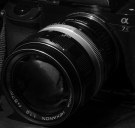
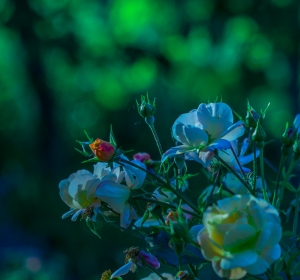
First up, the Legacy Glass:
Konica Hexanon, 57mm 1.2. KR to NEX adapter, 463g, 62mm filter. 1st introduced in the late 1960’s. There is a mild yellow cast to this copy which isn’t that uncommon inside older lenses. Some time under a LED light can clear it up in most cases. This Konica has a warm feel and I liked it instantly. It shows a bit of vignetting wide open, but nothing that effects image quality. I can’t speak for everyone, but I don’t have a 62mm filter laying around. It’s an odd size. It’s very consistent across the frame at both test apertures with a dramatic increase in sharpness as it stops down. Cost, 375-800$. Don’t confuse this lens with the amazing Hexanon 50mm 1.2. Well over 3,000$

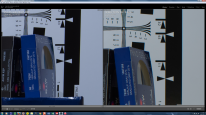
MC Rokkor-PG 1.2 58mm, MD to NEX adapter, 474g, 55mm filter. Shortly after receiving this lens I had a new favorite! It was introduced in 1966 and the MC version was produced into 1972. I thought like many, that this was a specialty lens, great bokeh, really fun for low light photography. When I tested this lens for sharpness I was blown away! Fairly typical wide open, touch of vignetting and loses some sharpness on frame edges. At f8 this lens is tack sharp! Cost, 375-600$ (Don’t pay more than $425, plenty of great copies in that range available). This is a must have for legacy collectors!
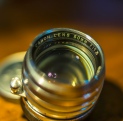
Canon 50mm 1.5 Rangefinder, L39 to NEX adapter, 269g, 40mm filter. This Leica copy(summarit 1.5) is tiny. Sharpening up after f2.8, it’s the softest lens here wide open, also the slowest of the bunch. Color is spectacular and it’s very capable for high quality photos stopped down. Like most of the smaller 50’s, it can be tough to focus, even at 14.4x(A7r magnifier). The little Canon is rock solid and beautiful. Note: M39 to M plate can be used if you already have a M to NEX adapter. Cost, 300-400$
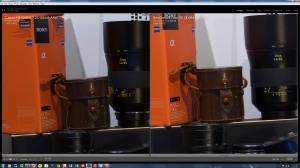
Canon FD 50mm 1.2 L, FD to NEX adapter, 376g, 52mm filter. The distinctive red circle around on the front tells you instantly this is a different lens from other FD 50’s. It has a floating aspherical element which makes it extremely advanced compared to most any lens then and now. Introduced in 1980, Ken Rockwell fawns over this lens, not that he fawns over anything… The FD does set itself apart from many 1.2’s. It shows remarkable DOF and sharpness at 1.2. Stop it down and it’s crisp! I don’t expect a 35 year old lens to compete with the near perfection of Otus, but comparing the two at f8 will leave many wondering why you’d spend another 3200$ It may be the best of the fast fifties… Cost, 675-1,300$
Canon 50mm 1.2 Rangefinder, LTM L39 to NEX Adapter, 346g, 55mm filter. Reasonably sharp with less contrast than the Otus wide open, this lens was first seen in 1956. My copy was made after 1961. It does show mild vignetting at 1.2 but like all the early Canon’s, it has great bell shaped bokeh and good color. At f8 this lens gets much sharper as you’d expect, but loses some clarity towards the extreme edges. Overall very usable in most any situation except close ups. Minimum distance at least a meter! Cost, 450-900$

Nippon Kogaku, Nikkor S Auto 55mm 1.2 Nikon F to NEX adapter, 424g, 52mm filter. Introduced in 1965 in the Nippon Kogaku version, Nikon later dropped the Kogaku designation and continued production until 1978. Some say this lens doesn’t have the contrast it’s constituents do. That might be true on the edges @1.2, but this lens ROCKS! It does show some vignetting. Bokeh is excellent. Once I started cranking it down… as sharp as anything here. I’m thinking we have another front runner for best classic lens…. Cost, 200-450$
Zunow 5cm Telkoku Kogaku 1.1, L39 to NEX adapter, 411g, 54mm filter. This is the rarest and most expensive lens in my collection. It is second only to the Leica Noctilux in price. A chrome beauty, it fetches well over 5,000$ in good condition. The black models can go upwards of 19k!  Early versions were seen in 1953 and it was the fastest lens of its time. Despite it being a highly valued collectors lens, I’m still trying to find it’s happy place! Very soft at 1.1 and difficult to focus, the Telkoku does produce spectacular backgrounds and has the fluttery bokeh characteristic of Petzval lenses. It’s tack sharp in the center at f11 and improves going up from f2. Cost, 5,000-20,000$
Early versions were seen in 1953 and it was the fastest lens of its time. Despite it being a highly valued collectors lens, I’m still trying to find it’s happy place! Very soft at 1.1 and difficult to focus, the Telkoku does produce spectacular backgrounds and has the fluttery bokeh characteristic of Petzval lenses. It’s tack sharp in the center at f11 and improves going up from f2. Cost, 5,000-20,000$

Nikkor S-C 1.4 5cm, Nikon S to NEX adpater, 171g, 45.4mm filter. The smallest lens tested, it’s also the coolest looking! Coupled with two possible adapter options, it weighs a bit more than the Canon 1.5. Being an internal S mount it requires a focusing helicoid of some type to operate. At f 1.4, this is the worst lens tested. Grainy, no contrast and easily the least sharp… I shot it with both adapter options, gave a bit more light, still horrible. You’d think at 1.4 it would perform pretty well. For a small lens, focusing isn’t an issue. It sharpens up quickly as you bring the aperture tighter for reasonable pictures at f8. Even with it’s good looks, given the choices out there, pass on this lens. Don’t pay more than 300$ if interested, Cost, 200-500$


SMC Pentax, 50mm 1.2, PK to NEX adapter, 394g, 52mm filter. People often overlook this speedy Asahi Optical Co. lens. You shouldn’t! Every bit the equal of the other 1.2’s for character, this lens has worthy sharpness wide open with slight to moderate vignetting. Compared here to the Kogaku 55mm, this lens does show edge darkening and softness. Introduced in 1975 and manufactured to 1984, in the next photo with an Otus close up as a comparison, it does quite well. Collectors haven’t missed this treasure, prices continue to climb, Cost, 375-800$
The Modern Contenders
Zeiss Otus Distagon 55mm 1.4, ZE, EF to NEX (smart)adapter, 1030g, 77mm filter. Bad ass, nothing better made in full frame normal lenses, especially at 1.4. Cost 3990$
Sony Zeiss Sonnar T*, 55mm 1.8 FE, no adapter…. 281g, 49mm filter. Some call it the “Baby Otus” Best FE lens made, period. “best autofocus lens ever” according to DXO. Cost, 998$
Honorable mention, Loxia 50mm 2.0, Leica Apo Summicron 50mm 2.0. Don’t have these to test, but they have to be considered in a modern lens search.
Based on size, convenience and cost the “Baby Otus” wins by a landslide. The differences in IQ are almost negligible as we will see. Color rendering, feel, bokeh and edge to edge sharpness, personal preference make this a difficult choice. First look at the DXO ratings, on the equivalent sensor to the A7r (D800e). Big edge to the Otus in sharpness and this shows in some of the test shots.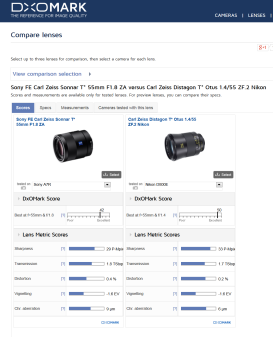 Wide open the DXO rating seems accurate.
Wide open the DXO rating seems accurate.
As we stop it down the Otus continues to pull away from the FE. Again, this isn’t by a large margin. One thing that really impresses is the focusing ease on the Distagon. The Otus in the viewfinder or on the LCD is like a fine pair of binoculars. Clear, like you’re right there. The FE isn’t bad in this regard but the disparity is noticeable.
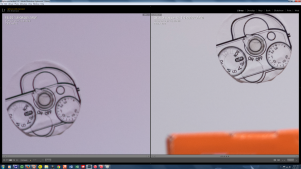
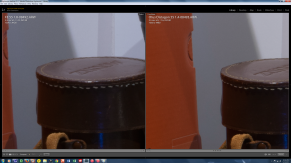
Another thing I find amazing about the Otus line is it’s diffraction characteristics. Cranked down there is very little clarity loss. By the laws of physics it has to diffract some, but I can’t see it. Here’s both lens maxed out. I won’t bore you here, but the FE softens some at this setting for sure. Check out the entire F stop side by sides directly here.
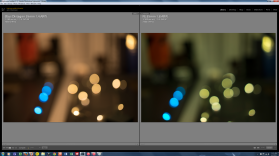
For bokeh, they’re both pretty clinical compared to the older lenses. The Otus is a bit faster has more character.
Conclusions…..
Wow, a ton of data to mull! If I had to pick one classic it’s a toss up for first place between the Rokkor 58mm and the FD L, Canon. They are both super sharp for an old lens. In side by side testing against the Otus and a 100mm Makro Planar, the 58 held it’s own! Only in extreme edge detail does the disparity become apparent. Neither of these lenses will do landscapes like the two modern Zeiss’s, and the color rendering of Distagon & Sonnar are amazing. Of the non 0.95’s, which will be featured in part II, the Zunow gets the nod for the dreamiest of the bunch. It’s just unique enough to make it worth the large investment, even if it’s not sharpest tool in the shed….
Best value of the classics is easily the Nikkor Kogaku 55mm 1.2. Kogaku copies, or just the Nikkor S labels, are cheap, great quality and have comparable characteristics of the others here. Those of you who’d prefer to grab a 1.4 lens, to save money, can spend a few extra dollars to acquire this sensational light gatherer.
The Konica Hexar, Hexanon 50mm 1.2 should really be here. It’s pretty expensive and while that’s never stopped me, I have plenty of fast lenses…. I would like it if someone had some shots utilizing this lens. I’d be happy to put them into a album on flickr for comparison to the others.
I will be adding more photos as I go along. The baby dream lens, 1.2 Canon LTM, isn’t represented very well. I really look forward to the 0.95’s!
Eric
